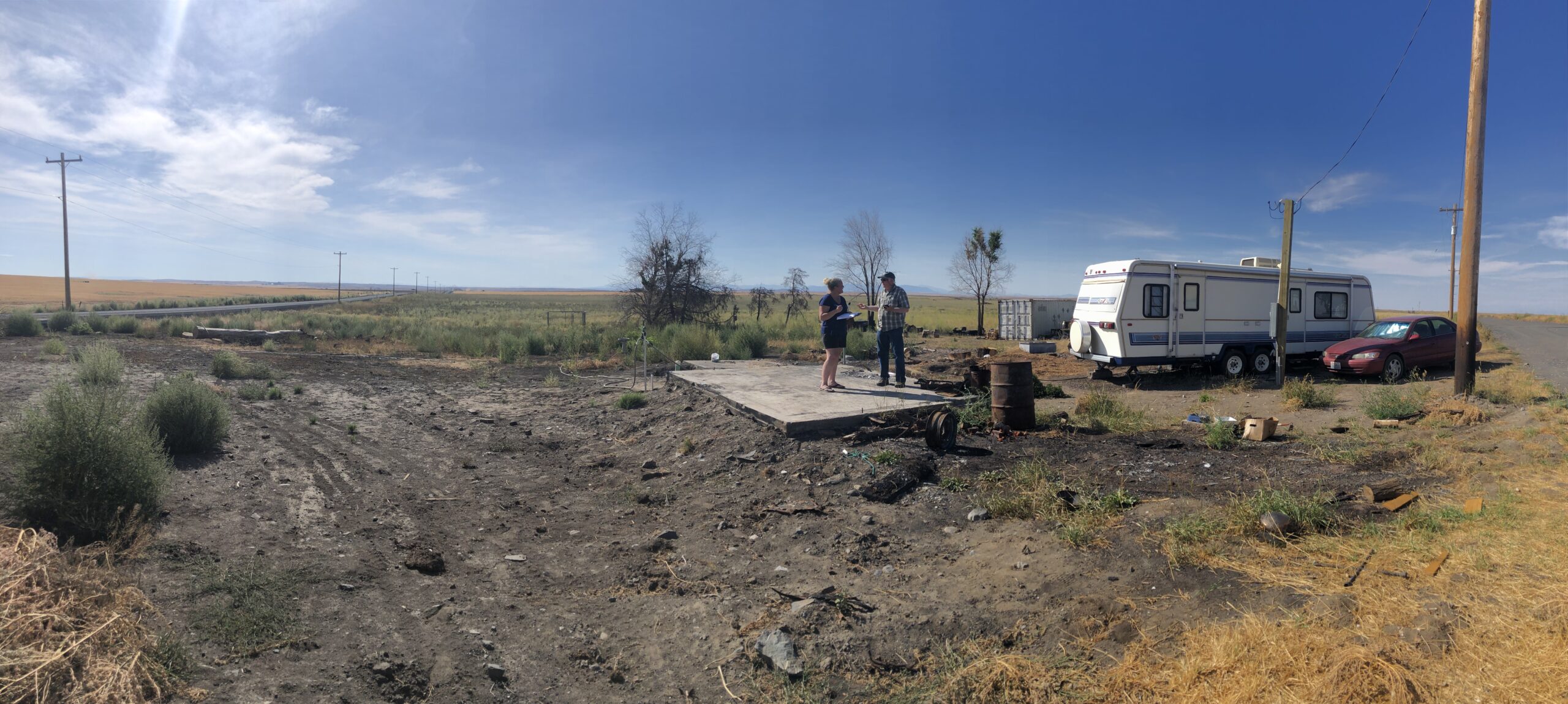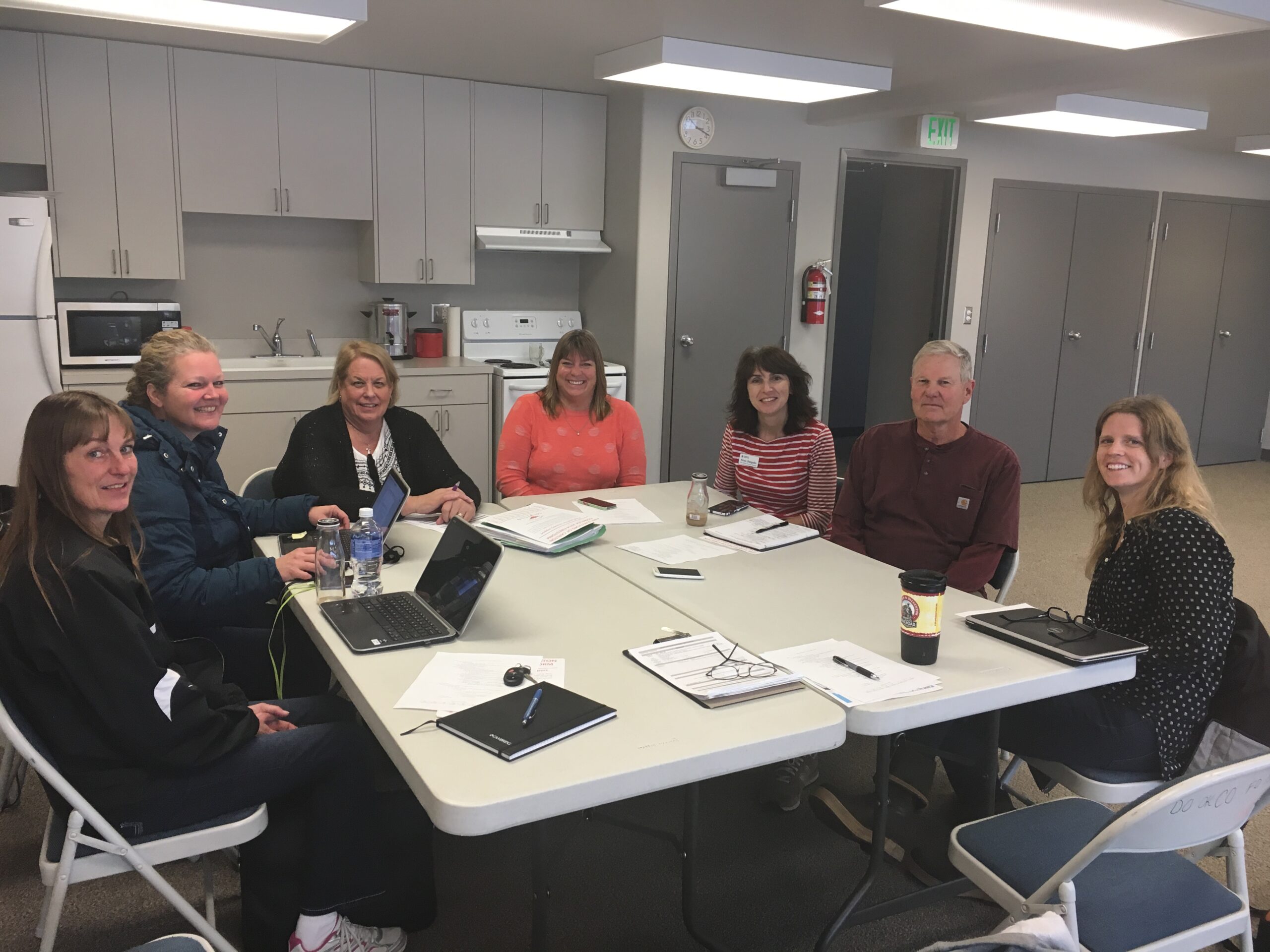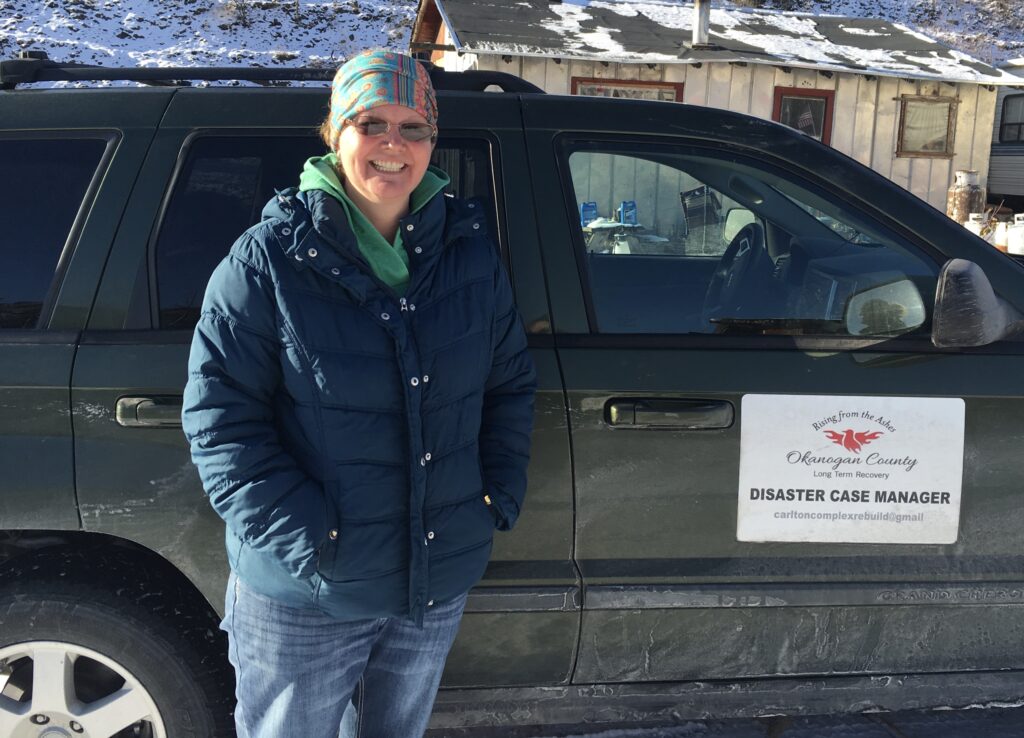At the national level, it is widely recognized and understood that disastrous events in our communities create the need to address unmet needs in the long term. One proven way to do so is Disaster Case Management (DCM) programming. According to the Voluntary Organizations Active in Disaster (VOAD) manual, DCM is defined as: “a time-limited process by which a Disaster Case Manager partners with a disaster affected individual or family (survivor/client) in order to plan for and achieve realistic goals for recovery following a disaster.” Long Term Recovery Groups (LTRGs) and Community Organizations Active in Disaster (COADs) have clear processes to accomplish long term recovery in a community, including the effective use of DCM Programs.
In Washington, the Okanogan Co. Long Term Recovery Group (LTRG) has led a DCM Program for over a decade since the 2014 Carlton Complex Fire to assist survivors develop and maintain a recovery plan to address long-term unmet needs through resources management, data management, volunteer management, financial management, and more.
Some Best Practices According to the Okanogan Co. LTRG:
– Have a process to access and track resources received and needed by the survivor, including gift cards and personal resources.
– Assist in creating a Recovery Plan for each survivor that is specific to the survivor’s unmet needs.
– Holistic Disaster Case Management training
– Have a process for outreach and intake, including adopting a field safety protocol.
– Have a process for opening cases, assigning priority, and closing cases.
– Keep a log of every client interaction, including any interactions you have on behalf of your client with vendors and volunteers.
To learn more about setting up a DCM Program in your area, contact:
Okanogan County Long Term Recovery Group
Jessica Farmer, Lead DCM and Disaster Resiliency Program Manager
(509) 846-5101
[email protected]
Disaster Leadership Team
Carlene Anders, Executive Director
(509) 733-0318
[email protected]



